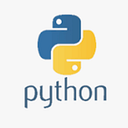Introduction to Machine Learning: A Beginner’s Guide
Machine learning, a subset of artificial intelligence, is changing the way we interact with technology. From recommendation systems on Netflix to autonomous vehicles, machine learning is everywhere. But what exactly is it, and how does it work? In this beginner’s guide, we’ll demystify machine learning and provide simple code examples to help you get started on your data-driven journey.
What is Machine Learning?
At its core, machine learning is the practice of using algorithms to parse data, learn from it, and then make predictions or decisions based on that learning. It’s the process of teaching a computer to recognize patterns and make intelligent decisions without being explicitly programmed.
Machine learning can be divided into three main types:
Supervised Learning
In supervised learning, the algorithm is trained on a labeled dataset, where the correct answer is provided. It learns to map input data to the correct output.
Unsupervised Learning
Unsupervised learning deals with unlabeled data. The algorithm tries to learn the patterns and structures in the data without any guidance.
Reinforcement Learning
Reinforcement learning involves training an algorithm to make sequences of decisions. It learns to achieve a goal in an uncertain and potentially complex environment.
Why is Machine Learning Important?
Machine learning is transforming industries and applications across the board:
- Healthcare: Predicting diseases, drug discovery, and personalizing treatment plans.
- Finance: Detecting fraud, algorithmic trading, and risk assessment.
- E-commerce: Recommender systems, customer segmentation, and demand forecasting.
- Autonomous Vehicles: Self-driving cars use machine learning to make decisions based on sensor inputs.
- Natural Language Processing (NLP): Chatbots, language translation, and sentiment analysis.
- Image and Speech Recognition: Facial recognition, voice assistants, and more.
Getting Started with Python and Scikit-Learn
Python is the go-to programming language for machine learning due to its simplicity and a rich ecosystem of libraries. Scikit-Learn is a powerful library for machine learning in Python. Let’s dive into some simple code examples to illustrate the basics of machine learning.
Example 1: Linear Regression
Linear regression is one of the simplest algorithms in machine learning, used for predicting a continuous value. In this example, we’ll predict a student’s exam score based on the number of hours they studied.
import numpy as np
from sklearn.linear_model import LinearRegression
# Sample data
X = np.array([1, 2, 3, 4, 5]).reshape(-1, 1) # Hours studied
y = np.array([45, 55, 65, 75, 85]) # Exam scores
# Create and train the model
model = LinearRegression()
model.fit(X, y)
# Predict the score for a student who studied for 6 hours
predicted_score = model.predict([[6]])
print(f"Predicted score for 6 hours of study: {predicted_score[0]:.2f}")Example 2: K-Means Clustering
K-Means is an unsupervised learning algorithm used for clustering similar data points. In this example, we’ll cluster a dataset of two features into two clusters.
import matplotlib.pyplot as plt
from sklearn.cluster import KMeans
from sklearn.datasets import make_blobs
# Create synthetic data
data, _ = make_blobs(n_samples=300, centers=2, random_state=42)
# Create and fit the K-Means model
model = KMeans(n_clusters=2)
model.fit(data)
# Plot the data points and cluster centers
plt.scatter(data[:, 0], data[:, 1], c=model.labels_, cmap='viridis')
plt.scatter(model.cluster_centers_[:, 0], model.cluster_centers_[:, 1], s=200, c='red')
plt.title('K-Means Clustering')
plt.show()Conclusion
Machine learning is a vast field, and this guide is just the beginning. To become proficient, you’ll need to explore various algorithms, dive deeper into libraries like Scikit-Learn and TensorFlow, and work on real-world projects.
Remember, machine learning is not about memorizing code but understanding the underlying principles. It’s a journey of experimentation, learning from mistakes, and leveraging data to make informed decisions. Whether you’re a student, a professional, or a curious mind, machine learning offers endless possibilities to explore.
So, roll up your sleeves, fire up your favorite Python environment, and start your machine learning adventure today!
Data Science Journey
Thank you for your time and interest! 🚀
You can find even more content at Data Science Journey💫
